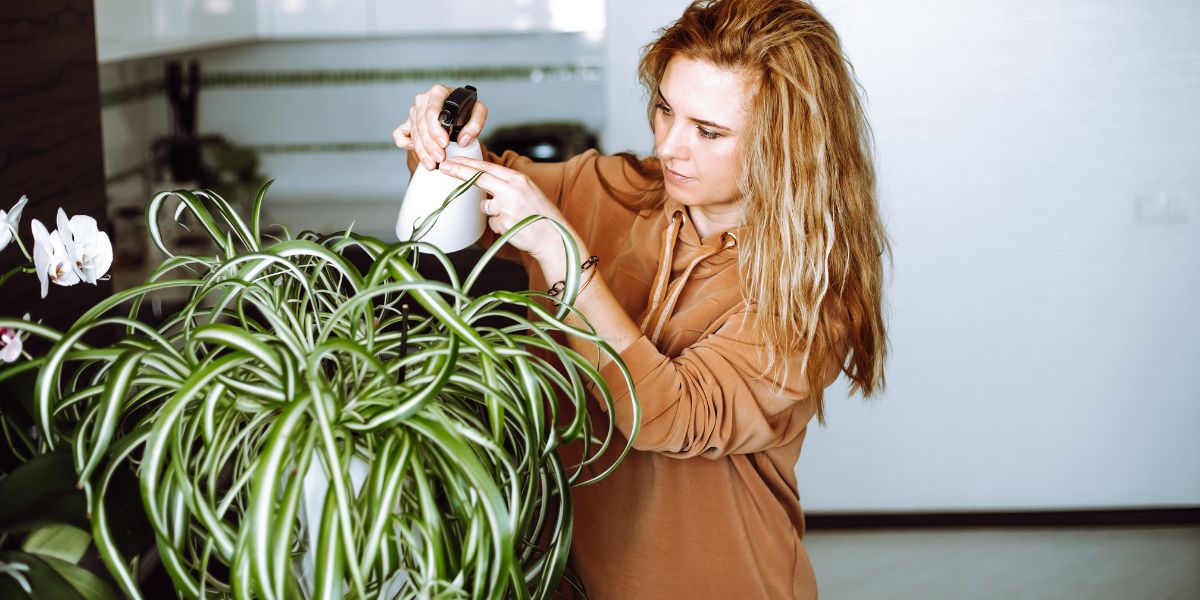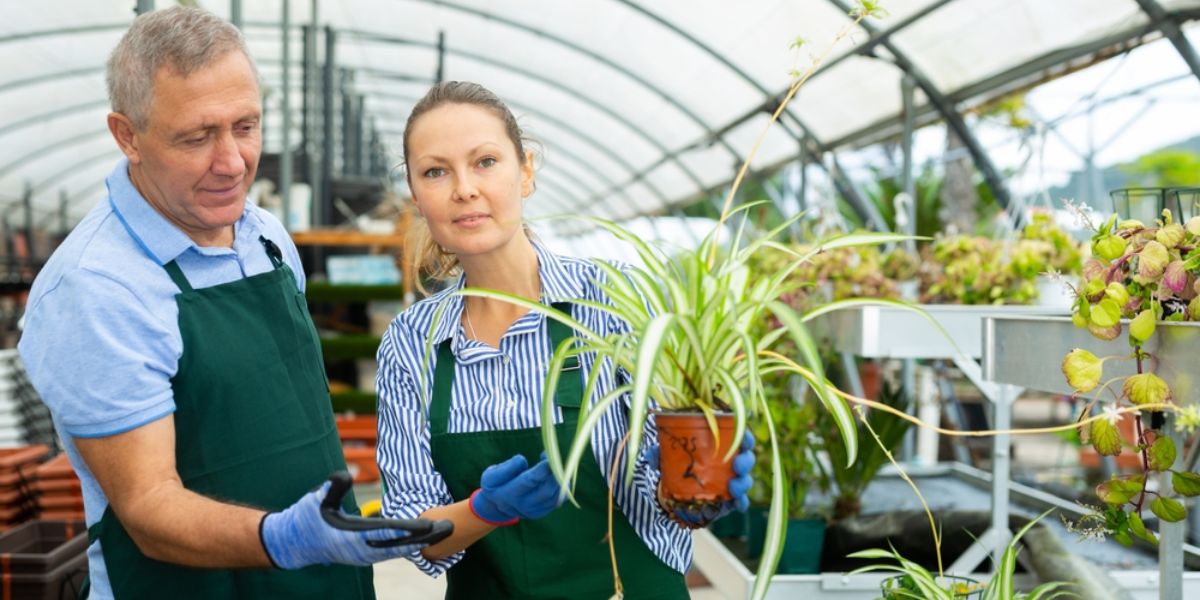Free delivery in Abu Dhabi for orders over 250 AED | Sharjah/Dubai/Al Ain: 35 AED.
Free delivery in Abu Dhabi for orders over 250 AED | Sharjah/Dubai/Al Ain: 35 AED.

Spider plant (Chlorophytum comosum) is a widespread houseplant that is great for both beginner plant lovers and seasoned plants. These hardy plants can thrive in indoor environments and also help purify the air. Knowing the spider plant’s basic needs is essential to ensuring its viability. Although it can tolerate low light, it likes stronger indirect sunlight.
Knowing “How to Care for Spider Plants?” is necessary to maintain this plant’s aesthetic appeal. Spiders and other pests should be kept under control, even clipping off the brown tips. Spiders can repay us with lush foliage and beautiful branches, and they are ideal for sharing or spreading with minimum effort.
The following are some important caring instructions for spider plants:
Spider variants thrive in bright, indirect sunlight and are best in well-lit, indirect sunlight. For the best development, Place the spider near a window that faces east or west. However, avoid direct sunlight, as their delicate leaves burn. Although they can tolerate low light, different varieties lose some of their vibrant colours and may stop growing.
Artificial light sources such as fluorescent lights can encourage growth in dimly lit areas. To provide uniform light exposure, rotate the plant on a regular basis. Find a balance between highlight and lowlight to maintain the health and beauty of your spider plant. Keeping it in an area with balanced light ensures your spider plant develops perfectly and stays healthy.
Moderate water is suitable for these Chlorophytum Comosum. Ensure the soil is still slightly moist, and water the plant when the topsoil is dry. Plants left in standing water can develop root rot, so frequently watering in spring and summer helps the plant grow actively.
It is advisable to use distilled or filtered water for spider plants as they are sensitive to pollutants such as chlorine and fluoride in tap water.
Well-drained soil that maintains air balance and retains moisture is ideal for spiders. Light, loamy soil is best for these plants because it encourages strong root growth and prevents water from pooling at the bottom. Although specially formulated mixes for cacti or succulents also work well. But mixing a simple multi-purpose pot is frequently adequate. These include common ingredients such as perlite, sand, or bark for better removal and to avoid compaction.
Avoid deep and heavy soil because there is too much moisture so it may be at risk of root rot. The ideal pH range for the spider plant is between 6.0 and 7.0, which is slightly acidic compared to neutral soil. This ensures the availability of important nutrients for plant growth.

Spiders prefer environments similar to their natural tropical habitats and live in moderate temperatures. The ideal temperature range for these plants is 65°F to 75°F. Although they can tolerate a few degrees less, keeping them away from lower temperatures is best.
Spider plants prefer environments with a bit more moisture in the air, especially during dry conditions.
Despite their preference, they can still do well in typical indoor humidity levels, which are usually around 40-60%.
In areas where the air is drier (e.g., during winter), spider plants may struggle. They benefit from occasional misting (spraying water on their leaves) or being placed near a source of humidity (like a humidifier or bathroom).
Spider plants can still survive in drier conditions or climates but may need extra care (such as misting or humidity) to stay healthy.
The Mentioned plants are usually hardy and not very vulnerable to pests, though. But they can sometimes fall prey to common houseplant pests such as mealybugs, aphids, spider mites, and scale insects. It is necessary to check the plants often to avoid infestation. Although small and often difficult to see, mealybugs and aphids are more noticeable than spider mites, which can be detected by their tiny webs.
Wiping the leaves carefully to remove insects and eggs is the first step in pest control using a damp cloth. Neem oil or insecticidal soap is safe for spiders and can be used on severe infestations. Apply the solution to the affected area as directed on the label. In addition to preventing the spread, keep the plant healthy by not overwatering. This may encourage pests.
Better air quality and a natural touch of indoor plants do well in Abu Dhabi’s typical indoor environment due to low humidity and moderate temperatures. Spiders make great indoor plants for homes and offices in places like Abu Dhabi.
Spiders can be divided into several types based on their growth pattern and leaf type. A synopsis is provided below.
Many plants are beloved for their eye-catching white stripes on their green leaves, While Variegatum has white edges. Indirect lighting is ideal for this low-maintenance plant which also includes expensive air purifiers.
Chlorophytum comosum ‘Green’ is one of the non-variety spider variants with solid green striped leaves. Compared to others, they are more durable and can withstand lower light levels. These low-maintenance plants thrive under a wide range of conditions. This plant is ideal for minimalist decorating and natural beauty as it has an elegant and simple look.
Small, wavy leaves with a white centre stripe are characteristic of curly spiders, which add a fun twist to classic seedlings. Curly spiders look beautiful in a vertical basket with striking cascading growth and thrive in bright indirect light. Baby Spider Plants These spider variants are simple and can take root in water or be planted directly into the soil. They’re great for growing new plants or giving as gifts because they’re small and appealing.
In a nutshell, spider plants are a great focal point for any interior space and are easy to maintain. One can support the health and vitality of these plants by providing indirect lighting. Occasional fertilization during the growing season and regular pruning of dead leaves will encourage new growth.
Spider plants can help bring natural charm to your home! These colourful plants are known for their air-filtering abilities and require little maintenance. Therefore, they look good in every indoor space. You can choose your spider plant from My Green Leaf. Start your green adventure now and add some greenery to your home.